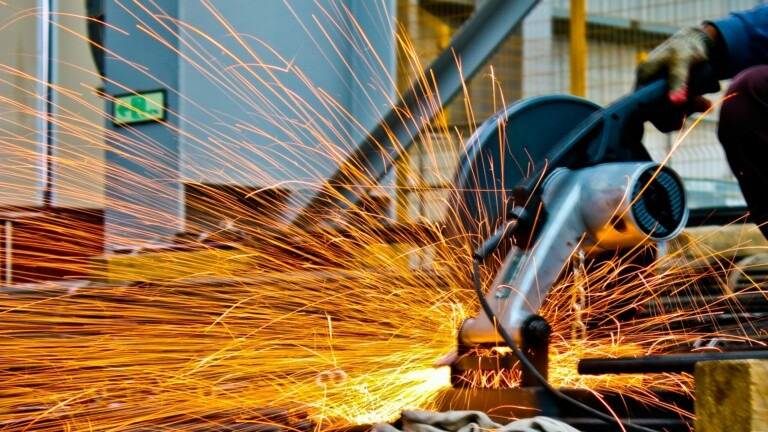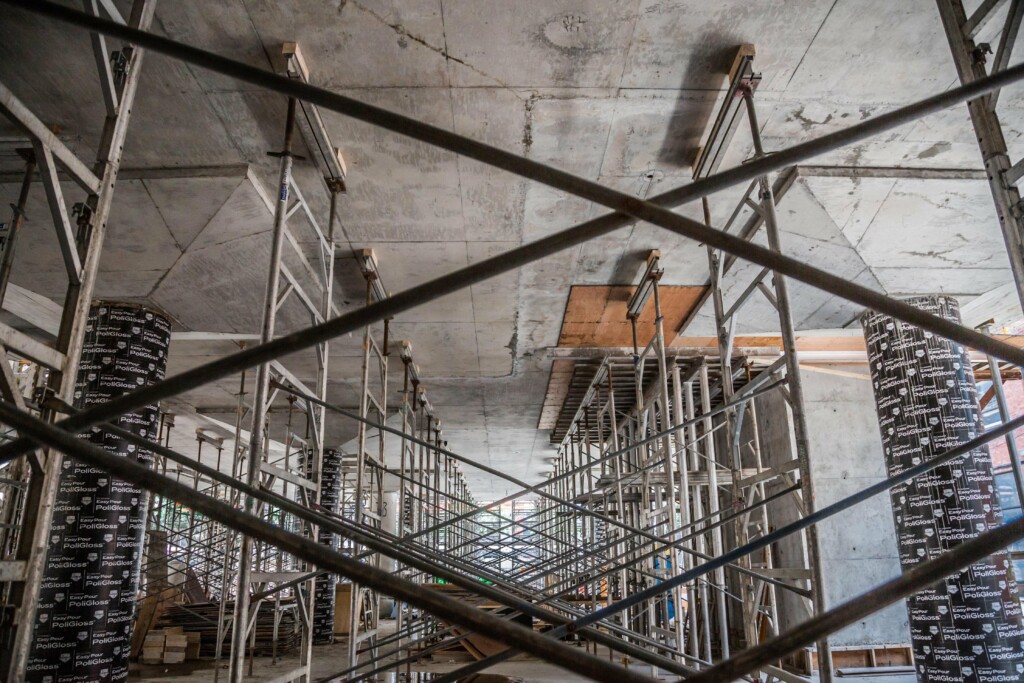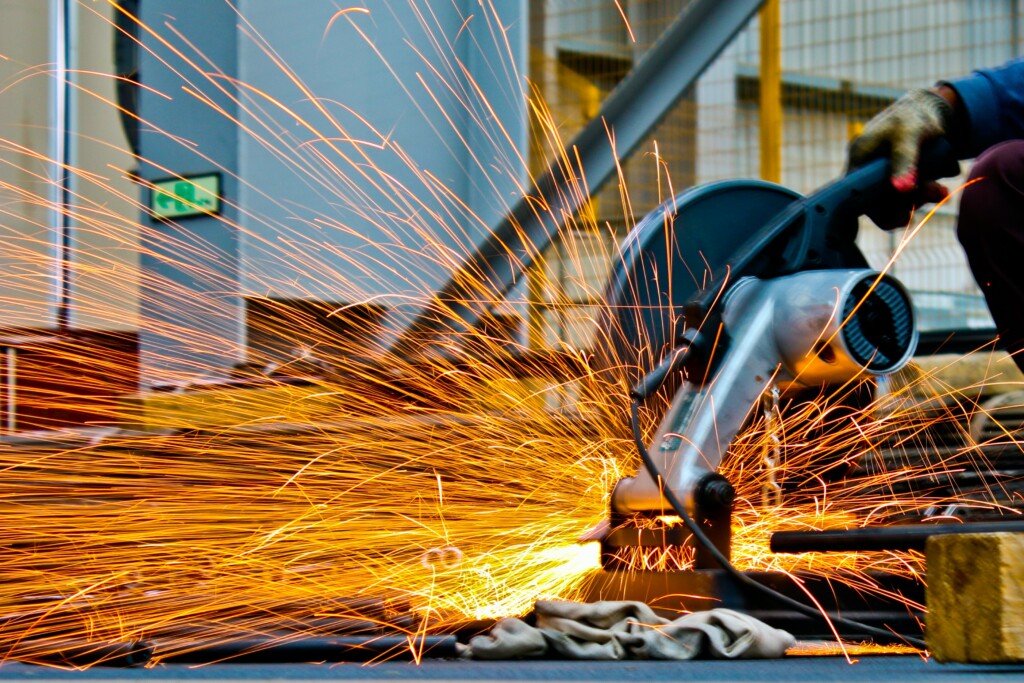How IoT fits into the construction industry

The construction industry has always been quick to take advantage of technical innovation, and IoT capabilities are now playing a greater role in the projects that shape the physical world around us.
A recent report from Research and Markets predicts that global revenue for IoT in construction will reach $9.6 billion USD by 2025. This represents considerable growth from the $4.4 billion USD generated in 2019. A separate study from Allied Market Research anticipates global investment for IoT in construction to reach more than $19 Billion USD by 2027, delivering a CAGR of 14% between 2020 and 2027.
While the methodologies and findings of each study differ, they paint a similar picture of the future of IoT in construction – one that is less hazardous, more predictable, more efficient, and more productive.

How do you put IoT in Construction?
To make job sites safer and more efficient , construction companies are now deploying both environmental sensors and wearable devices in the field. Both are used to track data from an ongoing construction project and relay information about site conditions and employee behaviors.
Wearable devices are primarily entering the worksite in the form of smart glasses, helmets and watches – and these devices seem to be delivering results. Rackspace Technologies claims that wearable IoT devices deployed in construction sites have already improved workplace satisfaction by 3.5% and boosted productivity by 8.5%.
Sensors and Radio-frequency Identification (RFID) tags are utilized both for worksite monitoring and asset tracking purposes. These can be attached to essential equipment pieces, as well as structures in high traffic areas to monitor environmental conditions as well as proactive material maintenance and ordering. Solutions like Exact Technologies’ concrete monitoring sensors, for example, give managers a clear understanding of the structural integrity of their projects, which could be useful in managing both a job’s progress and the safety of the workforce..
Construction sites are also embracing AI technologies via computer vision. On-site security cameras utilize intelligent monitoring programs that process visual data to better anticipate workplace needs. This can be used for everything from safety precautions to theft prevention.
How IoT can boost safety in the workplace
Respondents to both of the aforementioned studies highlighted the health and wellbeing of onsite employees as a key focus of their investments in IoT in construction, and it’s not hard to see why. Injury rates in construction are 71% higher than the average across all industries, and with the annual cost of construction site injuries in the US totalling around $11.5 billion, workplace security is a top priority.
There are a number of IoT solutions that help address the hazards inherent in building sites. For example, wearable sensors that allow managers to remotely monitor both an employee’s activity, as well as the atmospheric conditions in which they operate. These devices enable real-time safety management by tracking everything from environmental hazards, like hazardous gasses, to workers’ breathing and heart rates.
Devices like AGC’s smart glasses give shift managers a literal glimpse of the risks facing their workers, which helps them adjust the day’s agenda to address potential pitfalls like open trenches and mislaid equipment. In the age of Covid-19, this technology also allows managers to better enforce social distancing guidelines, even from remote locations.
Some companies are now combining IoT technology with AI to create solutions that allow untold worksite management benefits. This project from Qualcomm, for example, feeds data from IoT sensors placed across a worksite to a sophisticated AI that can instantly process and contextualize performance data to create enhanced safety plans.

How IoT improves worksite productivity
Workplace insights collected from IoT sensors can also be used to improve the efficiency of construction sites. Wearable sensors will keep managers up to date on the times it takes workers to complete certain tasks, which should help track scheduling. Similarly, monitoring equipment and materials will make ordering new supplies proactively much easier by giving an up-to-the-minute understanding of their stock and condition.
IoT can even improve the precision of remotely operated machine control. Processes like drilling, piling and paving can be streamlined to improve their precision thanks to embedded IoT sensors that provide real-time reporting of the progress and status of both the equipment and their progress. The sensors can feed complex and nuanced information to remote users that can help shape the usage and processes surrounding these pieces of equipment.
Nikon – Trimble created an IoT solution to meet all of these needs with their Visionlink system. This asset tracking solution utilizes agile sensors and GPS devices on mission-critical equipment to log the activities of machinery such as excavators and monitor usage and the operation times of these tools. Combined with the system’s more traditional monitoring capabilities, such as surveillance cameras, supervisors are better able to assess workplace progress and make adjustments as needed.
It all starts with connectivity
Though it will largely be dependent on the scale of the work site, IoT projects in the construction industry tend to operate off of LPWAN connectivity like SigFox, LTE-M or NB-IoT. These low-power connectivity technologies allow sensors to transmit data across a wide area at a low cost.
Soracom Air is a versatile connectivity solution that provides cellular connectivity to IoT devices operating off of 2G, 3G, 4G, LTE and Cat-M1 networks. Our IoT SIM cards are hardware agnostic and grant you access to multiple carriers for the best coverage wherever your fleet may go.
Interested in learning how Soracom has helped more than 20,000 innovators bring their IoT projects to life? Speak with one of our experts today to help make your IoT dreams a reality.



